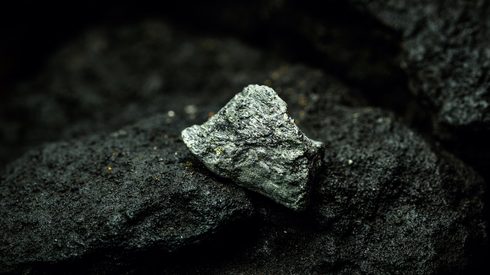Graphite prices have slipped from their early-2022 highs, reflecting both a resumption of more normal production and shipments from graphite producers in China and Africa, and a significant downturn in demand from the steel industry.
Traditional graphite applications have seen sharp declines this year, with global crude steel production volumes tumbling.
In the first seven months of 2022, global crude steel production fell by around 6% year-on-year, with a similar decline in graphite demand from traditional steel-related applications – namely, refractories for natural graphite and electrodes for synthetic graphite.
With graphite’s traditional applications still representing about 75% of total natural graphite demand, it was no surprise to see sluggish conditions in the graphite market.
Price declines have been relatively modest, however, given the collapse in steel sector demand, and typical margins between graphite grades have been narrowing, reflecting the incredible growth evident in demand for graphite from the electric vehicle (EV) battery sector.
Forecasts for natural graphite consumption
For 2023, Fastmarkets forecasts natural graphite consumption in the battery sector to rise to a par with consumption in the refractories sector, and to far exceed refractories consumption of natural graphite in 2024.
By 2025, we expect natural graphite consumption in batteries to exceed consumption from all traditional uses combined.
In contrast to the expected decline in graphite consumption in traditional applications this year, Fastmarkets has forecast that demand for graphite from the battery sector in 2022 will rise by 40% year on year, in line with growth in the EV sector.
We expect to see natural graphite consumption in the battery sector rise to around 300,000 tonnes this year, up from around 210,000 tonnes in 2021.
Although this would still comprise only a small portion of total graphite consumption, surging demand for graphite from the EV battery anode industry is helping not only to support underlying graphite fines prices, but is also resulting in the compression of traditional margins in China between larger flake graphite and fines graphite, with -100 mesh fines used in the production of graphite active anode material.
Expecting a deficit
We expect to see the graphite market tip back into deficit in late 2022. Strong growth from the battery sector is expected to persist into the final quarter of the year, with Chinese natural graphite production expected to decline as usual during the winter, with production cuts in Heilongjiang province.
The natural graphite market is forecast to remain largely in deficit until 2025.
As the strong demand growth from the EV battery sector propels graphite consumption upward, the industry will be relying on increased graphite production from established producers, primarily in China and Mozambique, with junior mining companies striving to ramp up production at new graphite operations.
The addition of new capacity has already faced significant delays, however, and we expect continued struggles for many new entrants, with an appreciable influx of new supply not expected to hit the market – and to remedy the growing underlying supply-demand imbalance – before 2025.
The direct effect of supply shortages could be felt even more keenly in the precursor and active anode material markets, namely uncoated spherical purified graphite (uSPG) and coated spherical purified graphite (cSPG), because the qualification process for new graphite supply to be used in the battery industry typically takes three years.
The impending graphite shortage, rising power costs, the drive by new entrants to develop renewable power supply sources, and the need to meet increasingly stringent environmental controls and restrictions, will all lead to significantly higher graphite prices in the coming years.
This will reflect both the incredible underlying market demand and the higher costs associated with graphite production. Graphite prices are in a lull, but this lull will prove to be temporary and may well be the calm before the storm.
Graphite prices have slipped from their early-2022 highs. More detailed analysis and 10-year forecasts of demand, supply and price are available in Fastmarkets’ Graphite Long-term Forecast, published October 2022.




